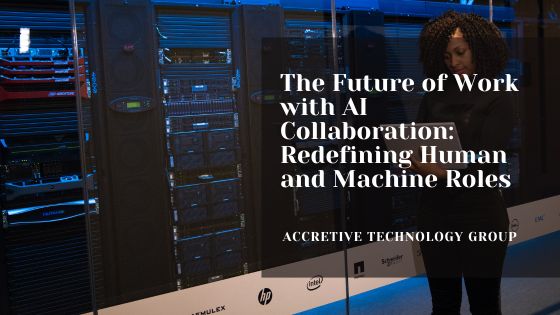Artificial Intelligence is no longer just a tool operating behind the scenes. It is becoming an active collaborator in the workplace, influencing how tasks are performed and how humans and machines work together. As AI moves from automation to true collaboration, it is reshaping industries, workflows, and the very definition of work.
Moving Beyond Automation
For years, AI has been associated with automation, replacing repetitive and routine tasks. While automation remains important, the future lies in AI systems that complement rather than replace human workers. These collaborative systems can process massive amounts of data, generate insights, and recommend actions while leaving humans to handle creativity, empathy, and complex decision-making. This partnership creates a more efficient and balanced division of labor.
Augmenting Human Skills
AI collaboration enhances human capabilities instead of diminishing them. For example, in healthcare, AI can scan medical images with high accuracy, flagging potential issues for doctors to review. In marketing, AI tools can analyze consumer behavior and suggest strategies, allowing creative teams to focus on storytelling and brand identity. By reducing time spent on data-heavy tasks, AI empowers workers to dedicate more energy to innovation and problem-solving.
Redefining Job Roles
The integration of AI into the workplace is leading to the creation of new job roles. Positions such as AI trainers, ethicists, and human-AI interaction designers are emerging as organizations seek to ensure that machines align with human values and goals. Traditional roles are also evolving. A financial analyst, for instance, may now spend less time compiling reports and more time interpreting AI-generated insights to guide strategy.
Collaboration in Decision-Making
One of AI’s most significant contributions is its ability to support decision-making. By analyzing trends, predicting outcomes, and offering recommendations, AI provides leaders with a broader view of complex situations. However, final decisions remain with humans, who bring ethical judgment, contextual understanding, and empathy into the equation. This blend of human oversight and machine intelligence creates more informed and balanced outcomes.
Addressing Challenges of AI Collaboration
As AI becomes an active collaborator, organizations must address challenges such as trust, transparency, and bias. Workers need to understand how AI systems make recommendations to feel confident in relying on them. Clear communication and responsible AI design are critical for ensuring trust between humans and machines. Additionally, companies must invest in reskilling and continuous learning so employees are prepared to work effectively alongside AI.
A Human-Centric Future of Work
The future of work will not be defined by machines replacing people, but by humans and AI working together to achieve more than either could alone. Collaboration will allow businesses to innovate faster, solve problems more effectively, and respond to change with agility. By embracing AI as a partner, organizations can unlock new levels of productivity while keeping human creativity, empathy, and leadership at the center.

